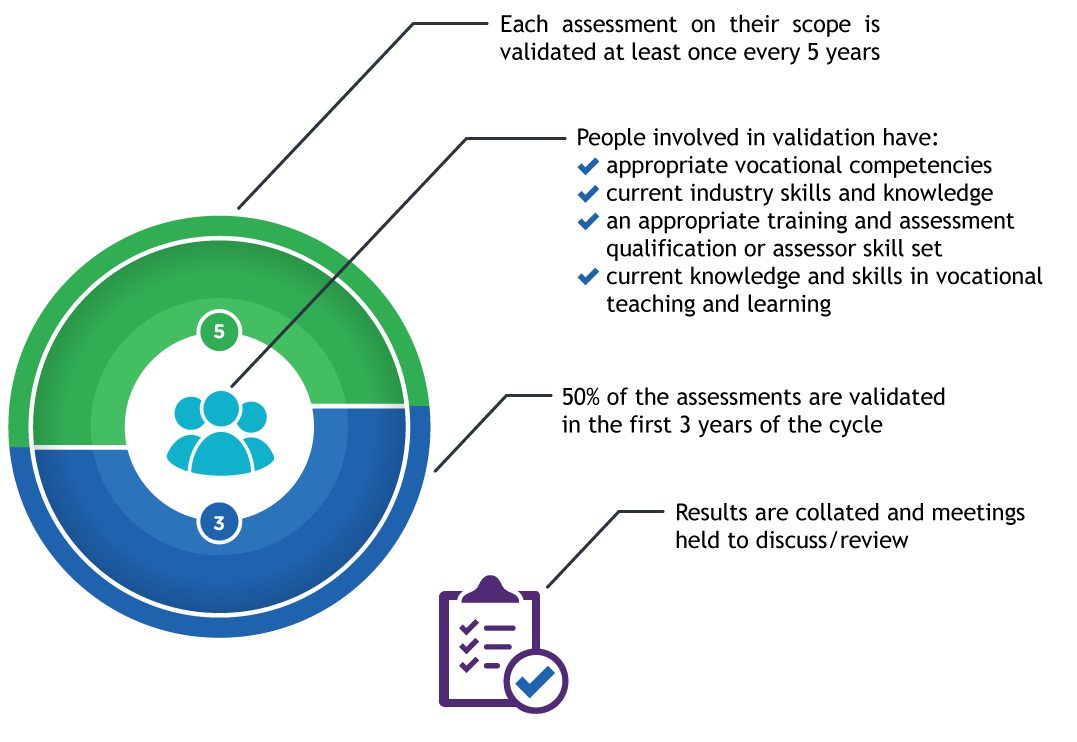“Real-Life” Series – Article #1
Can technology make the compliance burden a breeze?
As most will be aware by now, I have a love / love relationship with technology and at 68 years young, I struggle watching my peers (be they RTO professionals and or non RTO enterprise training staff) juggling with multiple spread sheets, out-dated databases that require manual input and a partridge in a pear tree. (Alright the partridge thing was a bit over the top)
I wrote recently about technology and trainers which, not only markedly improved the lot of us trainers / assessors, but reduced the administration load dramatically.
Over the coming months, I would like to look at how technology can assist with the beast that is compliance.
Today I would like to discuss Validation!
What does ASQA say?
“Validation activities are generally conducted after assessment is complete—so that an RTO can consider the validity of both assessment practices and judgements.”
“Validation involves checking that your assessment tools have produced valid, reliable, sufficient, current and authentic evidence—evidence that allows your RTO to make reasonable judgements about whether training product requirements have been met.”
“The validation process involves reviewing a statistically valid sample of the assessments and making recommendations for future improvements to the assessment tool, process and/or outcomes if applicable.”
How do RTO’s conduct this process / what is common practice?
A recent LinkedIn post open my eyes to current practices for example: managing via spread sheet / elaborate flow charts and lots of filing cabinets. The diagram below explains this process:
 This is a very time-consuming and costly process – not to mention it is also likely not an effective process.
This is a very time-consuming and costly process – not to mention it is also likely not an effective process.
Case study
An RTO I visited recently conducts all validation online via their Training Management System as described
- The assessment/s are created within the software
- the “content expert” function in the system ensures the person creating and mapping has the requisite qualification/s
- Mapping experts are assigned within the system
- when the instrument is created a (or as many as the RTO wishes) mapping expert receives an email, logs on and validates the mapping
- When completed:
- the training coordinator receives:
- an email, logs on and assigns any number of internal and or external
- content experts that the system recognises and each receives
- an email, logs on and can view the instrument and make comment.
- the training coordinator receives:
- Once this process is complete the training coordinator then allows the instrument to be put “in use” and a number of students (determined by the RTO) are assessed using the instrument.
- As the assessments are conducted electronically (online or offline) the results are sent back to the software and once the set number have been completed the RTO runs a report in the system which shows any answers to theory that are incorrect and any steps in the practical that were not satisfactory.
- A meeting is convened (booked through the system) with appropriate personnel and results discussed and actions taken.
Each assessment created within the system is allocated a review date and the training coordinator is alerted at the specified time for review and the system will “lock out” the assessment if review isn’t undertaken within the time.
All date / time / person stamped ready for audit – feels pretty breezy to me.
 Jim Munro – Principal, JM Consulting.
Jim Munro – Principal, JM Consulting.
Jim is an experienced training and assessment management consultant with over thirty years helping mining and Registered Training organisations improve their safety and training processes. Jim is also a blogger and an expert advisor to Tutis on safety, training and assessment management.
This is a first in a series of articles covering “real-life” training and assessment challenges identified in the field during consulting assignments across enterprise VET functions and RTOs.
